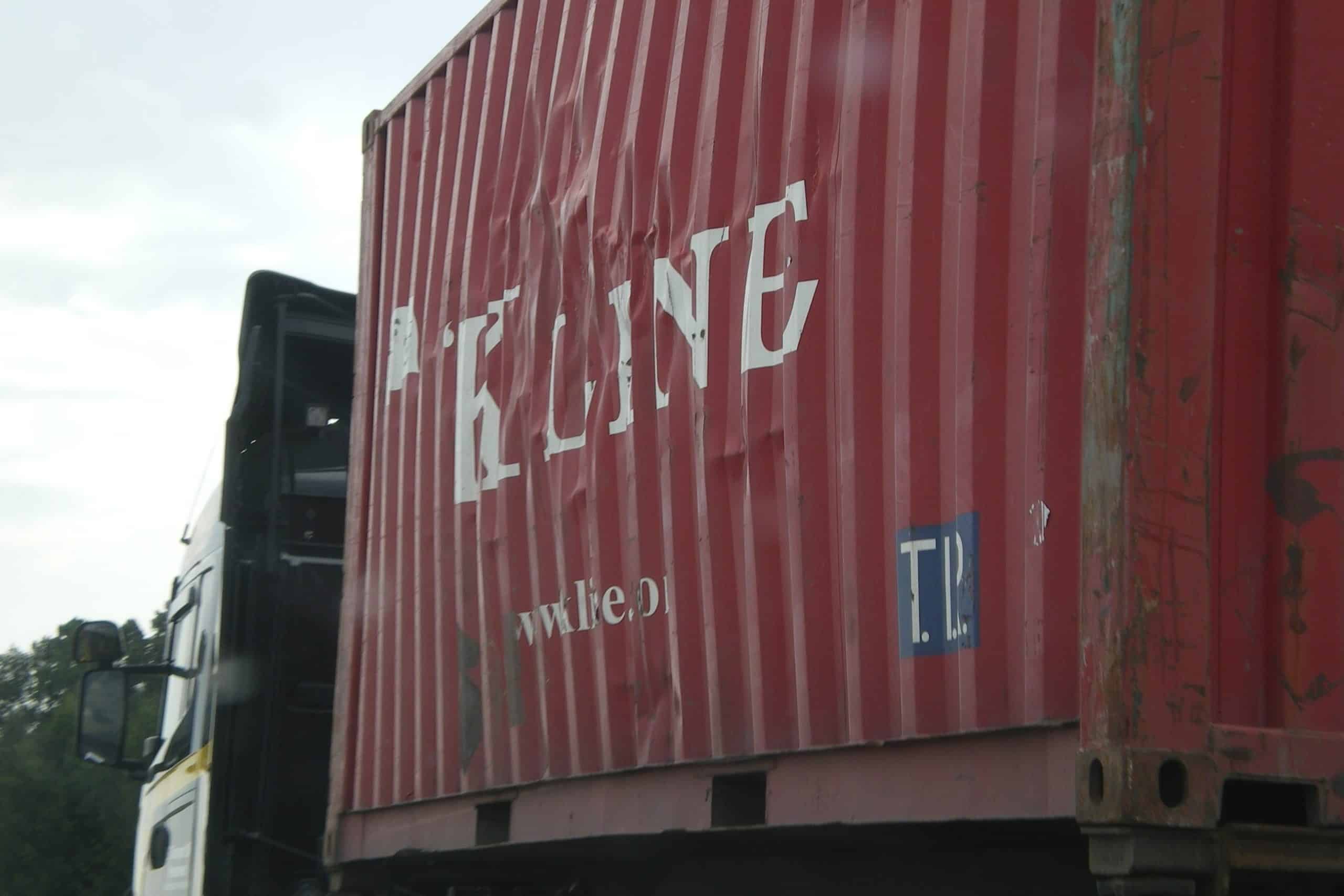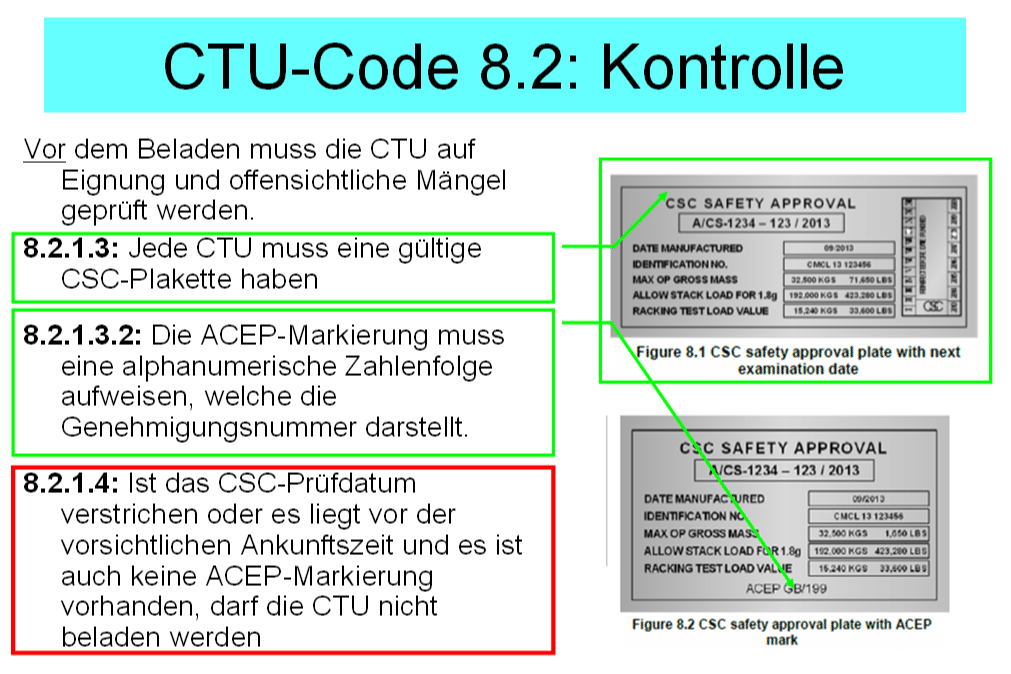
Now 10% off all Ergolash lashing straps save now! Voucher code: ergo10 | Valid until 31.05.2025
A significant proportion of all general cargo shipments worldwide are handled by container. Yet millions of these metal boxes are on the move by sea, rail and road.
They are subject to particular transport stresses everywhere and sometimes shippers have no inhibitions about handling them with little care when loading.
Although there are global rules for checking and repairing containers and, in theory at least, every container should be in order, all boxes have more or less major damage.
It is therefore essential to subject the container to an incoming inspection before loading.

Chapter 4.2.3 of the CTU Code 2015, the international regulations for handling containers, assigns responsibility for this to the shipper or packer. It states: “The packer should ensure that the CTU is checked before packing and that the condition of the CTU is suitable for the cargo to be transported”. Further line enumerations follow.
What would a customer think if he received his rather expensive goods in such packaging? He would probably think: I hope my goods are undamaged and take a much closer look to see if everything is in order.


In chapter 8.2, the regulations explain the control of the freight transport unit, but remain vague in the details.
It is therefore necessary for the shipping company to look into the matter and determine which type of CTU is suitable for its needs and what other characteristics need to be fulfilled.
The following explanations are the result of many container inspections or loading escorts in the field.
The truck driver often sets the wrong course by opening the doors of the container after arrival, folding them down and then driving it to the ramp.
The important check of the CSC sticker is then no longer so easily possible. The driver does this because it is common practice with many shippers/packers and an incoming goods inspection is not carried out.
These two phases should be clearly described for the inspector with clear criteria in order to facilitate the inspection.

It is not uncommon for companies to have to pay for repairs to containers even though they did not cause them.
Conversely, if no incoming inspection is carried out and no defects are found, this means that the container was in order when it was accepted and the damage was caused by the packer during its period of use.

The CSC sticker must be checked immediately after the container arrives.
If the requirements are not met, this is a hard knockout criterion.
Screws on the locking linkage are another knockout feature. The fastening must be riveted diagonally at the top and bottom. The locking lever and the lifting latch must also be riveted.



The entire container must then be visually inspected. Check not only all sides from the outside, but also the bottom from below. Such damage should always be documented, especially as it can lead to problems when using bumper pads . This is because the hard rust surface can lead to a loss of pressure in the dunnage bag due to abrasion.

A container must also be checked for leaks . The best solution here is the two-man method. One climbs into the container, the other locks the door completely. Now it must be completely dark inside.
Diffuse light may penetrate through the pressure equalization openings in bright sunlight, but this is not critical. Otherwise, even the smallest leak would be recognizable by the incidence of light.
Damage to the door seals in particular can be detected in this way, e.g. if the door is warped and no longer closes correctly, even though the seal is in good condition.

Some shippers/packers also come up with unusual ideas and make the container suitable for their purposes.
Here, the load bars on the door were cut out and moved. This means that the container has been structurally modified.

The container must also be clean and odorless . If the container needs to be ventilated before loading, the time required for this should not be counted towards the loading time in consultation with the shipping company. The CTU Code provides information on this in various places, but particularly in point 12.1.6. Particular attention should be paid to indications as to whether a container was fumigated. This is because some packers do not comply with their labeling obligations in this regard.
Masked pressure equalization openings are a clear sign of fumigation. They are often sealed from the inside. Caution is therefore always advised.

The aim must be to defend against claims for damages for defects that were already present.
Therefore, defects must be recorded in a checklist and, if necessary, photographed. It may also make sense to consult with the shipping company or freight forwarder about how to proceed. After all, it is always cheaper than having to pay for expensive repairs afterwards due to a lack of evidence.
Yours, Sigurd Ehringer
<< Previous article
Episode 6: Bay flashing or head flashing – what is it?
Next post >>
Episode 8: Positive locking in the container

Sigurd Ehringer
✔ VDI-zertifizierter Ausbilder für Ladungssicherung ✔ Fachbuch-Autor ✔ 8 Jahre Projektmanager ✔ 12 Jahre bei der Bundeswehr (Kompaniechef) ✔ 20 Jahre Vertriebserfahrung ✔ seit 1996 Berater/Ausbilder in der Logistik ✔ 44 Jahre Ausbilder/Trainer in verschiedenen Bereichen —> In einer Reihe von Fachbeiträgen aus der Praxis, zu Themen rund um den Container und LKW, erhalten Sie Profiwissen aus erster Hand. Wie sichert man Ladung korrekt und was sind die Grundlagen der Ladungssicherung? Erarbeitet und vorgestellt werden sie von Sigurd Ehringer, Inhaber von SE-LogCon.
Rothschenk assortment
Our customer center has only one goal: to turn your problems into solutions. Whether standard stowage cushions, bestsellers or load securing personally tailored to your needs -. we accompany you consistently from A as in field service to Z as in certification. That is our promise to you, as a leader in our industry.
We attach great importance to professional cargo securing. That is why we have our own production, which ensures reliable operation through modern manufacturing technologies and strict quality control. Thus, we offer our customers a comprehensive and high-quality range of services in the field of transport logistics.
DIN ISO 9001:2015, EMAS and Ecovadis are not foreign words to you? Then it's time to work with the best.
You don't take any risks with us - we have been awarded the Platinum Medal on the EcoVadis sustainability rating platform.
As a load securement company, we are proud to have several certifications that validate our sustainability efforts and our commitment to environmental protection and social responsibility. For you as a purchaser, this means that we demand and promote the implementation of high environmental and social standards both within the company and along the supply chain.
You are currently viewing a placeholder content from Google Maps. To access the actual content, click the button below. Please note that doing so will share data with third-party providers.
More Information